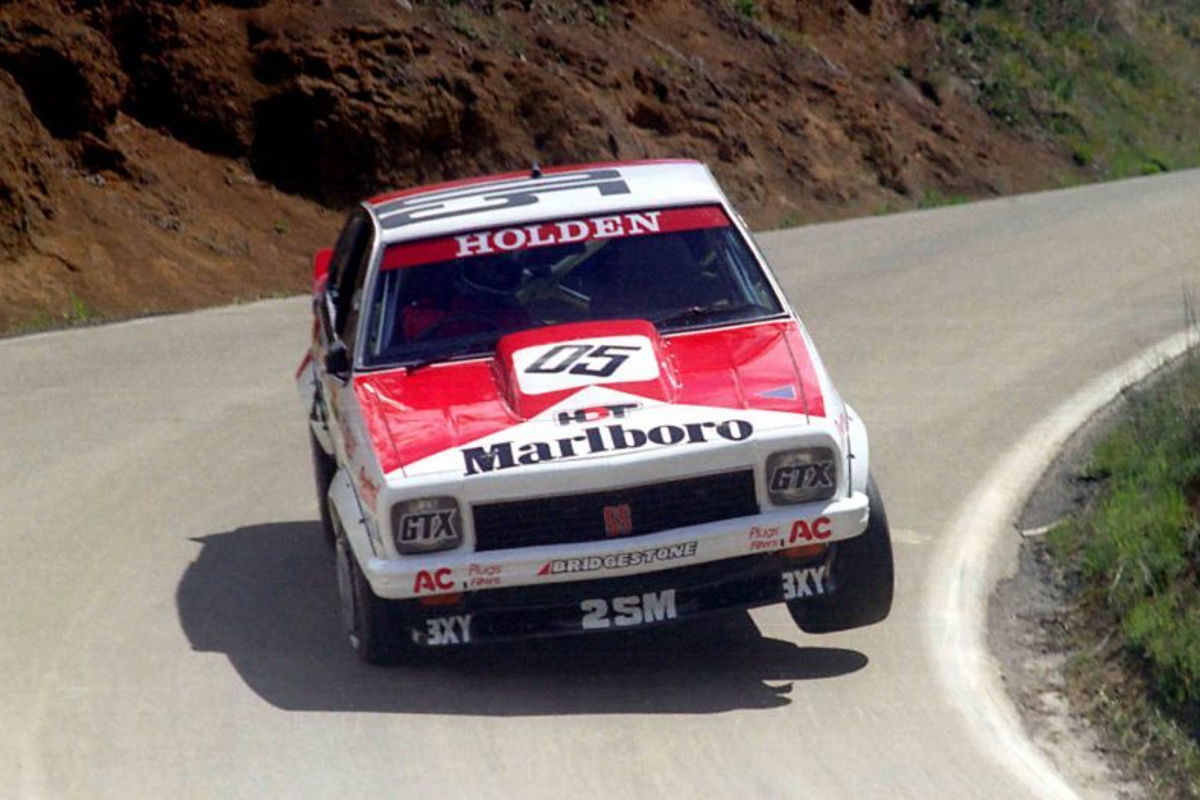
Given it’s Bathurst week, I thought it would be fun to reminisce about the ‘good old days’ of homologation specials. After all, in Australia these model variants only existed because of the draw of the Bathurst 500.
Many younger people maybe won’t realise that the locally produced homologation specials of the early 1970s, that are so valuable today, only existed to allow manufacturers to be competitive at Bathurst. That was because of the highly restrictive racing technical regulations in place at the time that meant that the cars raced were very close indeed to the production road cars.
Off the back of the so called ‘Supercar Scare’ of 1972, the regulations for the Bathurst 1000 were relaxed to allow more modifications to be made to the standard road cars under the new Group C rules. Hence the need for the special, low volume, production models such as the Falcon GT-HO disappeared. But over in Europe, as homologation specials were vanishing from the Australian landscape, the revised FIA Group 4 rules were about to produce a whole range of interesting low volume models. The critical decision came in 1976 when the required production numbers for FISA (FIA today) Group 4 (so-called special grand touring cars) homologation dropped from 500 units in 12 months to 400 units over 24 months.
That’s when the World Rally Championship, inaugurated in 1973, was really hitting it’s straps as a major force on the motorsports landscape and was more important to manufacturers than Formula 1 by a long way. Yes, rallying really was bigger than F1. Events such as the Monte Carlo Rally and the East African Safari were huge.
With these lower production numbers and the adoption of the Group 4 rules as the top class in the rallying world, manufacturers started making small runs of highly modified everyday cars that were available to the public to freely buy. Hence we had the Ford Escort RS, the Talbot Sunbeam Lotus, the Fiat Abarth 131 Rally, the Vauxhall Chevette HS2300 and so on. Believe me, the standard shopping versions of all these cars were as dull as ditch water. But the homologation specials that went on sale were great fun, if almost always underdeveloped and unrefined as road cars.

They were also often, at the time, also pretty unsaleable! So, there were bargains aplenty to be had.
In this day and age, no manufacturer would dream of putting such relatively untested and raw cars on the market. But back then almost anything went. As a 20 something rallying tragic, I owned a number of these different models but my favourite at the time was the Talbot Sunbeam Lotus. Google it!
It had a Lotus developed four-cylinder engine and a ZF five-speed gearbox. Whilst it was a great handling car in the dry, it was utterly dangerous in the wet. Predictably enough, it didn’t take long to loose my licence in that car.
In fact, the first competition car I ever built was to Group 4 rules and I did all the homologation paperwork myself. My first experience of dealing with FISA! That car was a Panther Lima rally car. Again, Google it and you’ll find a picture or two of the car plus an old yarn on Speedcafe if you’re interested (Ed – or you can read it here). The car was entered in the 1979 Monte Carlo Rally by its wealthy owner and I, plus one of my colleagues at Panther, was sent off to be the service crew in a van that I borrowed from Jack Brabham. Great days.
And then, in it’s wisdom, FISA decided that homologation specials needed to be even more extreme, and they let loose in 1982 with Group B. Unfortunately, that proved to be a step too far, as many of you will be aware through some of the great footage and documentaries available on YouTube.
But, boy, were there some cool homologation models made in that five years between ’82 and ’86.
The minimum production numbers dropped to 200, and then so-called evolution models only needed to be built in quantities of 20. All reason went out of the window and the cars of this era made those of the Australian Supercars Scare period look like Holden Barinas.
The Audi Sport Quattro, the Ford RS200, the Lancia Delta S4 and the Peugeot 205T16 were perhaps the highlights, but there were others. For me, the best executed of all these cars at the time were the Audi and the RS200. I’ve owned both and the Ford was the best looking Group B car, in my opinion. It actually looked like a designer had drawn it, rather than a school kid on a sugar high.
There was one factor that was common to both Group 4 and Group B, however. That was the never ending imagination of many of the manufacturers when it came to actual numbers of cars produced. It was a common theme for car makers to produce a batch of homologation road models and then to park them so close together that no FISA inspector could walk between them. That then meant that it was impossible to actually see if any of the cars, other than those around the perimeter, were finished and in working order!
Moreover, it was possible to do a count in the morning in one shed, have lunch, and then count the same cars again in a second shed. There was a lot to be said for a long lunch…

And like the Group 4 days, plenty of these road going homologation specials proved near impossible to sell at the time they were new.
It didn’t help that some of the models, like, for instance, the Group B MG Metro 6R4, were so badly developed for road use that they made the worst of the Group 4 cars look good. Those cars that were delivered to customers were thankfully almost all turned into carefully rebuilt rally cars and hence the roads of Europe were spared the danger that they represented in standard form.
By the way, the engine in the MG later went on to be the basis of the power unit in the Jaguar XJ220 in the early 1990s. No wonder so many of the Jaguar customers cancelled their orders once they realised the heritage. An unenviable period in the history of the British motor industry.
I’ve owned so many homologation specials, from the Group 4 Porsche 959 to the humble Group 1 Sunbeam Avenger Tiger, as they’ve always held a special fascination for me. For sure, they’re almost all worth a hell of a lot more money today than they were new and, as I’ve sold most of them now, they’ve definitely helped keep the kids in shoes over the years.
There’s no doubt, in my opinion, that cars that make us misty eyed are inevitably the ones that hark from our formative years. And that’s cool. The only thing to avoid, whether we’re talking GT-HO, Monaro, Sunbeam Lotus or Panther Lima, is actually driving one very far today! Cars have come a very long way since those heady days of crazy motorsport homologation specials… and some memories are best left intact.
It’s like meeting your hero – reality can ruin the illusion.













Discussion about this post